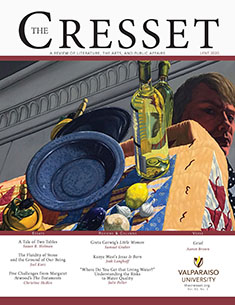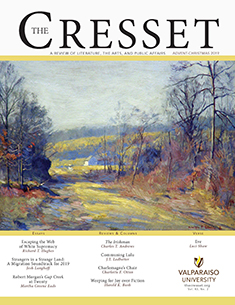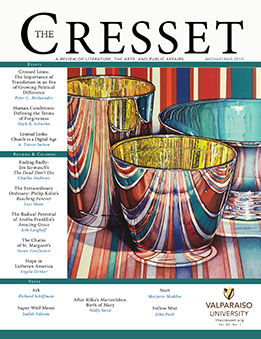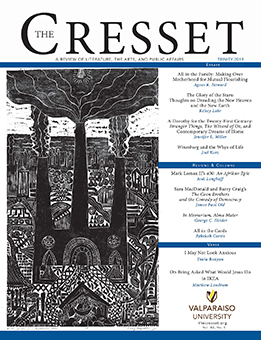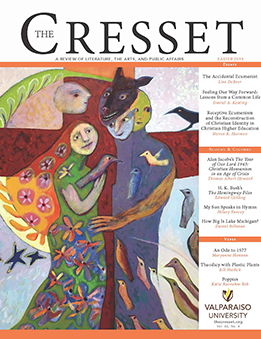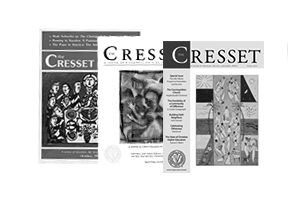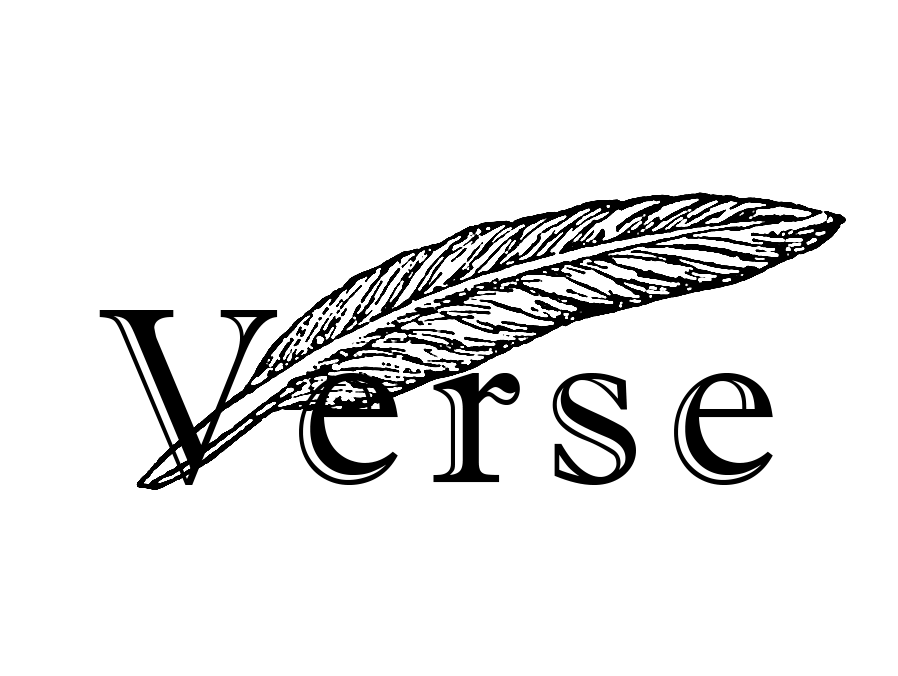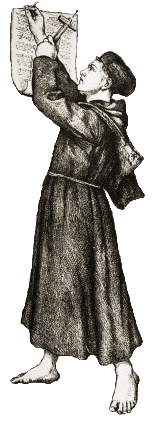Driving to church in the gathering darkness of a late-winter afternoon, I find myself in a state of persistent indecision. By the time I arrive at the Ash Wednesday service at my church, I’ve still reached no conclusion about what I should give up or take up for the Lenten season. Like most years, as Ash Wednesday approaches I wonder what will make my journey more meaningful. What do I need in this season? Some years the need is to let go of some burden; in other years the call is to take up some spiritual practice. Still other years I settle on nothing and wander through Lent more lost than the children of Israel in the wilderness.
The practice of fasting and prayer during the season leading to Easter goes back to the first century. The forty-day season of Lent has traditionally been a time when new Christians prepare for Easter baptism, and when other Christians “give up something” to focus on repentance. Lent has been practiced consistently since the fourth century in the Roman Catholic Church (Saunders 2002). Traditions about what “fasting” should include have varied from abstaining from all meat and meat products six days a week from Ash Wednesday to Good Friday, to giving up one luxury item for the entire forty days. In recent years some Christians have preferred to “take up” a practice which helps their spiritual preparation. No matter what one “lets go” or “takes up” the spirit of the practice is to prepare the believer for the church’s great celebration of Easter and the resurrection of Christ.
As I sit in the service, I’m having trouble engaging myself at any level beneath my nose. My mind is attending to the words and music, but my body and emotions are drifting. Then a tiny voice behind me pierces my rational posture. I tune in and dial up the volume, straining to hear the soft words.
The small voice belongs to a beloved child of the church. At five, this is Evie’s first Ash Wednesday service, and she has lots of questions. Mostly they are quietly whispered, and I can’t quite make them out. It seems obvious that she is trying to get her parents to bring her up to speed on exactly what is going on in the dimly lit sanctuary on this Wednesday night. Then one of her questions comes out loud and clear, “Why is the light on in the baptistery?”
Behind the double stained glass doors of the baptistery a light shines softly, bringing to life the subtle cross and fish surrounded by chunks of color. Evie’s question hangs there in my mind illuminating the significance of where we are gathered in the liturgical year: Ash Wednesday stands on the precipice between Epiphany and Lent.
The forty days of Lent follow a time honored Christian practice of forty-day spiritual quests. Many stories in scripture mark wilderness sojourns by noting forty days or even forty years. From the rains that fell on Noah and his ark full of animals, to the wanderings of Hagar, Elijah, and Moses, to the years spent in the wilderness by the children of Israel, to the desert temptations of Jesus, forty is the number that marks a time of trial, searching and utter dependence on the provision of God. Each biblical sojourn into a barren region is filled with questions, doubts, anxiety, anger, mistrust, and despair. Why would anyone choose to enter into such a time? The choice was most often not an easy one. The children of Israel begged to go, then tried to turn back, pleading for relief and preferring the security of the known evil (making bricks for Pharaoh) to the risk of an unknown future. Hagar was cast out with her son and destined to die. Noah thought he would never see dry land again. Elijah complained bitterly. Moses was fleeing a murder rap. Jesus had to struggle with evil personified.
Yet each of these wilderness narratives began with a significant defining moment. Before fleeing to Midian to tend sheep for forty years, Moses was awakened to a new identity and the injustice suffered by his people. God promised to make Hagar the mother of a great nation before Abraham sent her into the wilderness of Beer-sheba. Noah found himself the head of a lone family willing to obey God and build a boat in the desert. Elijah demonstrated the power of God over all the prophets of Baal before his life was threatened and he fled to the wilderness. Jesus answered a call to preach good news to the poor and heard God’s blessing before following the Spirit to live day and night with wild beasts and great danger.
And so Lent follows Epiphany. Wilderness follows baptism. Trial and danger follow defining moments. My own life has often tracked along a similar course. A pivotal and clarifying moment several years earlier prompted me to resign from a ministry position that was confiscating all joy from my life. It was tremendously liberating. Yet I soon found myself ushered into a season of doubt and waiting. Applications to graduate school were sent. Rejection letters came trickling in. I was left to figure out exactly what was defined and test out the strength of my new convictions. Soon it seemed that my defining moment was dissolving into a mirage at the edge of a barren place. I vacillated between resting securely in quiet waiting and clinging desperately to my sense of calling to both ministry and teaching.
Evie’s question touched something deep in me. I realize that my baptism and sense of vocation sustained me in the long season of waiting which followed my resignation. In the same way that God’s affirming love expressed in baptism sustained Jesus through trials and temptations in the desert, so the holy moments of our baptisms can sustain us in the wild and unpredictable experiences of our lives. We need the light and color of baptism on this otherwise somber and lonely night, as we embark on a Lenten journey that leads through a wilderness and eventually to a cross.
I watch our pastor Mark as he prepares for the ritual of burning our burdens. Kris’s clear soprano floats through “Amazing Grace.” A tall candle, surrounded by small smooth stones, stands at the center of the altar table. I think about how this practice of “burning our burdens” has become a tradition, and how it might change when Mark leaves. He announced his retirement only a short time ago. My own departure from staff ministry keeps hovering in my thoughts. Since that time I’ve missed tending to the ritual life of God’s people. Keeping the palms through the year. Burning them in a brass pot outside my church office. Touching parishioners as they come forward to mark and be marked by the season of Lent.
In the service we are invited to come forward and bring our burdens written on small slips of paper. We will burn them, and they will be mixed with water and palm ashes and then pass through our ministers’ hands to mark our foreheads with the sign of the cross.
Behind me Evie asks, Do we watch them burn? Oh, yes, Evie, I think, we do! We watch our burdens smolder through our lives day upon day and year upon year. We hold them until fire licks our fingers and then our souls and still we hold on until our burdens consume us from the inside.
But tonight is different. Tonight we burn our burdens in order to release them, to let go of the ways we are tempted to secure ourselves because we cannot be secured. We can only be consumed when we hold to the things in life that first make us feel safe and serve our needs, but then become burdens to bear when we cling too tightly, and finally a fire that consumes us. Tonight we practice letting them go, laying them down, seeing the burdens of our lives for what they are—ashes.
Walking toward the flame, I hold a tiny piece of paper that says simply, “decisions.” Since leaving full-time church ministry, I have been giving myself to the vocation of the scholarly life to become a pastoral theologian, so that I might teach ministers. Beginning in that long season of waiting, which followed my resignation, I have been trying to learn the spiritual wisdom and practice of detachment: letting go of my cherished role in the church, releasing my grip on previous years of vocational preparation, trying to open myself to the possibilities of serving God and the church in new ways. And many decisions haunt me now... taking exams, teaching opportunities, expanding our family.
When I touch my small piece of paper to the flame I see anger burning. Despite my efforts to cling less and open my hands more, still a barrage of decisions burden, frustrate and weigh me down. In this moment I see what I must let go this Lenten season: decisions must be laid down so that I might see them for what they are in the larger scheme of things. I remember my drive to the church. It was the deciding itself that paralyzed me. It was a symptom of the larger indecision which fills my mind. Do we keep trying to have a child? When will I be ready to take my qualifying exams? Should I take on a new contract job? These are questions that fill my life on this holy day.
The structure of human existence, as Edward Farley observes, is that we need things and ideas to live, and yet we can never be fully satisfied. These very needs—for good things and meaningful ideas—compel us to strive and compete with our neighbors, putting us at odds with each other. And we alienate one another not intentionally or with malice, but as a part and parcel of life. If we give in to this tragic structure, throwing our hands up in defeat, we become fatalists. If we try to flee from it by finding security in things or ideas, then eventually we fall into idolatry (Farley 1991). Each and every decision we make can take us toward freedom or idolatry.
The “decisions” I carry forward symbolically to burn are not of cosmic significance, yet when I lose sight of their dimension I risk being consumed by them. They trouble my relationships, alienate me from those I love and even from myself. I need a time of allowing my decisions to lie fallow, a season of fasting from making any life decisions, recognizing the luxury of such a gift of time. The ability to delay decisions, and having time and money at my disposal, is a quality of privilege not shared by all people of the world. Recognizing my relative privilege in this ability to choose and to wait has the sobering effect of readjusting my perspective.
By letting go of my life decisions for a while, they will lose their potency, and I will see them again in their proper scale and scope in the world. For these decisions lead to things and ideas which are necessary for life but which can also slip easily into corruption and idolatry. Such slippage traps me and leaves me cold. This Lenten season I hope to recognize again how we live in the inescapable condition of our finitude, a part of the human situation. Yet we are still called to live toward a sacred horizon, letting go of burdens and watching them burn to ashes, then walking away. Only then may we know for a moment exquisite freedom, transcending both the temptation to secure ourselves with many good things and ideas, and the temptation to give in to fatalistic defeat.
The ministers mix the ashes of our burdens with the ashes of last year’s palms, and soften them with water, symbol of both tears and baptism. Our journeys are taken up into the life of Christ and we walk untethered, yet never alone. The touch to my forehead is cool and earthy. I feel grief for our pastor’s leaving, for my losses, for the inescapable human condition. I feel my burdens taken up even as I lay them down. Life’s finitude sears me. I and my burdens are merely ashes floating in freedom.
When I return to my seat, Evie asks her mother, Will the ashes dry? I picture her behind me reaching up and gently touching the wet cross on her forehead. I think of infants. Humans are born with a soft spot just above the hair line. This fontanel is the shape of a cross. If you look carefully you can see a baby’s pulse in the soft cross. The “soft spot” is also remarkably tough. Eventually it will grow together and fuse the bones of the skull to protect more fully the delicate brain. Ashes to ashes. Out of the earth we are shaped: tiny, frail, delicate, and beautiful. And to earth we shall return. Between these times as Christian people we bear the sign of a cross, a sign of finitude, and a sign of hope.
I have attended many Ash Wednesday services. An hour later, after the ashes have been imposed I often find myself forgetting their presence on my forehead. But tonight the cool mud dries slowly, and I feel the cross marking me and claiming me, granting me freedom to let go of what otherwise would only consume me. As I drive into the night, the Lenten wilderness, I breathe deeply. I remember. And I hope.
Eileen R. Campbell-Reed is Associate Director for the Learning Pastoral Imagination Project at Luther Seminary in St. Paul, Minnesota.
Works Cited
Saunders, Rev. William. “History of Lent.” Arlington Catholic Herald. 2002. Accessed online 4/5/07: http://www.catholiceducation.org/articles/religion/re0527.html.
Farley, Edward. Good and Evil: Interpreting a Human Condition Minneapolis: Fortress Press, 1991.


